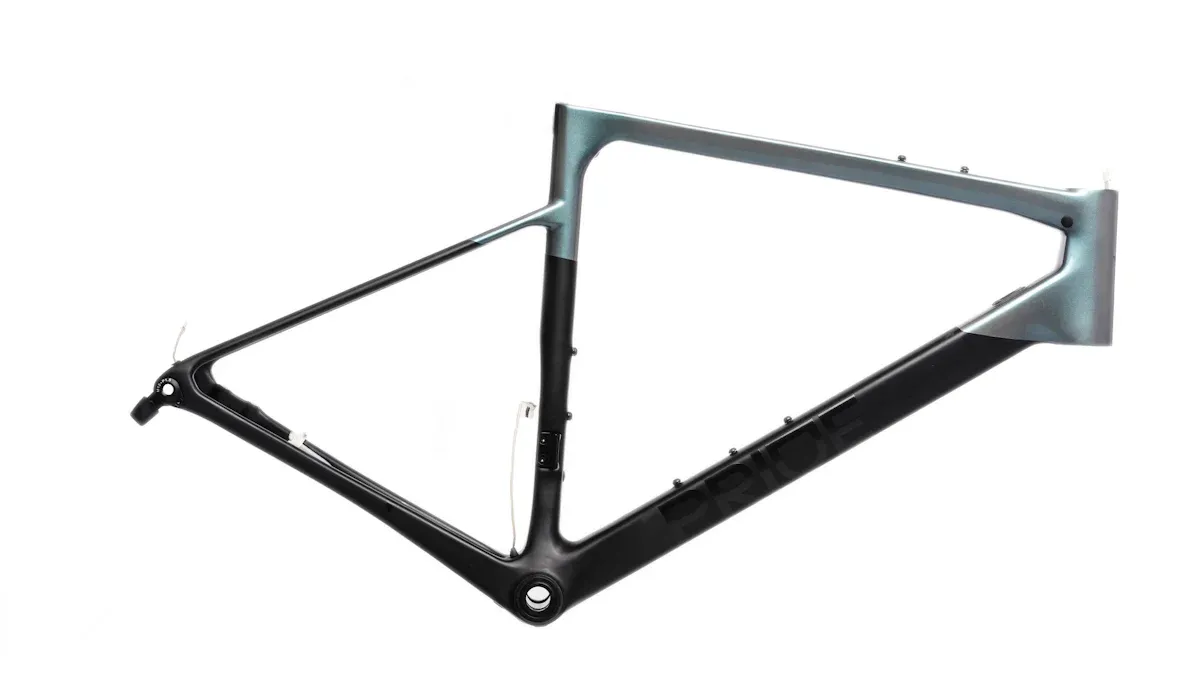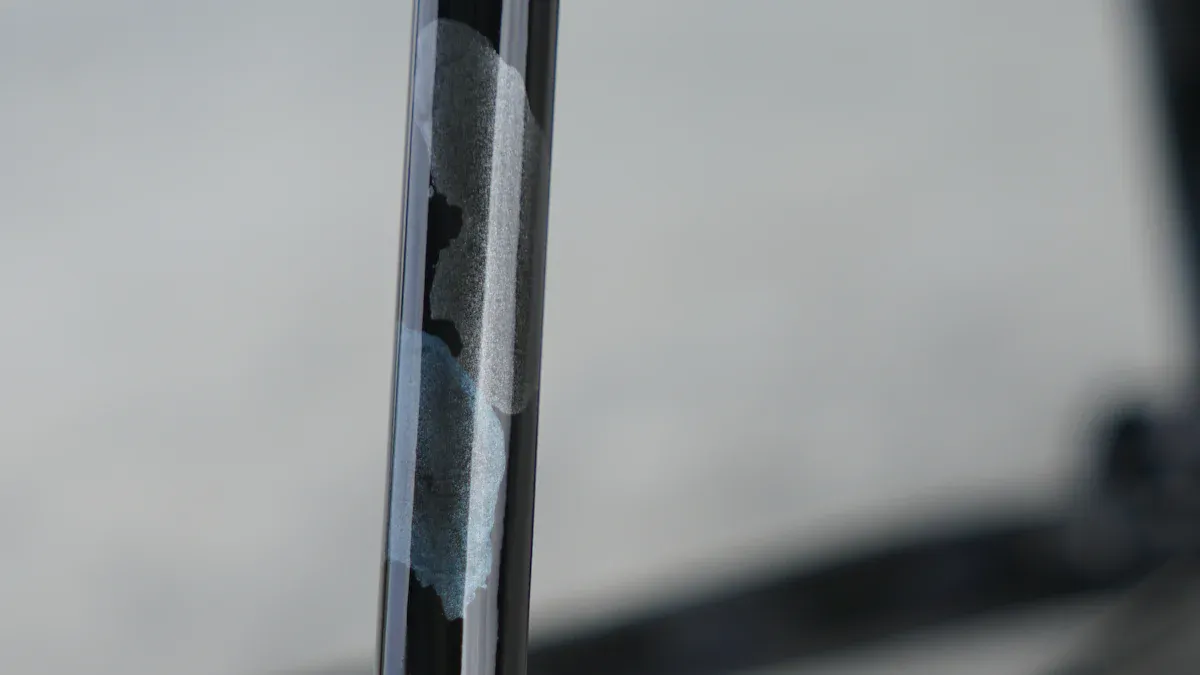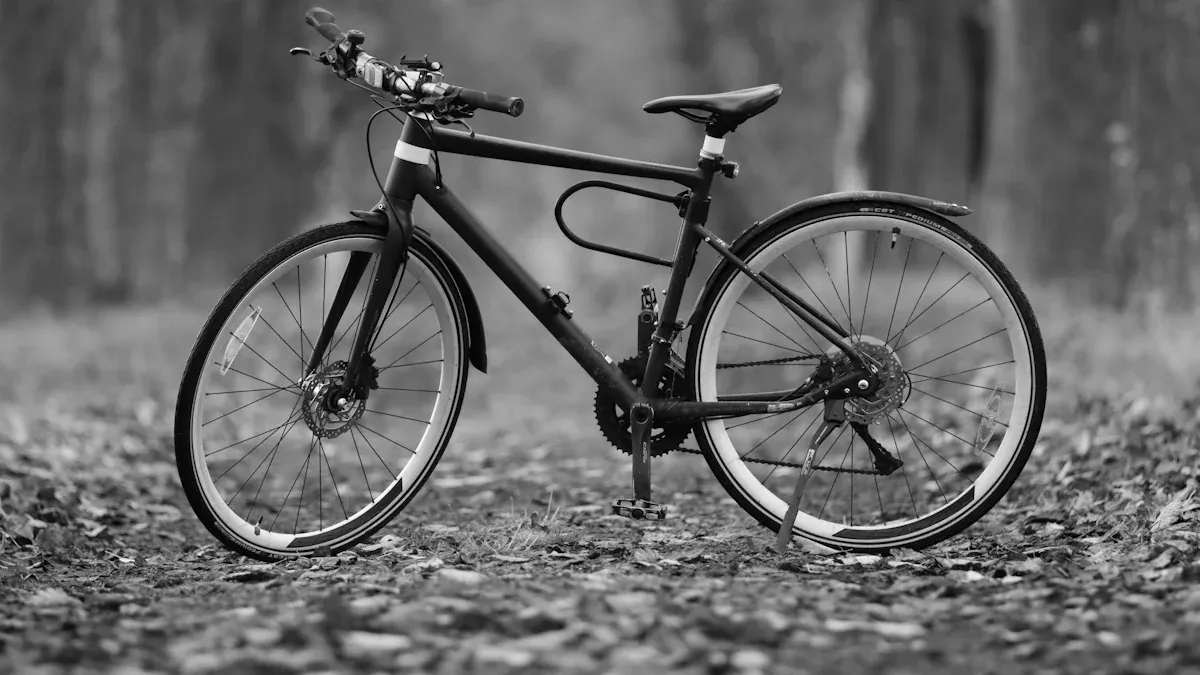
The world’s lightest bike frame you can buy now is the Litespeed Coll Dels Reis titanium road bike frame. It weighs only 948 grams. This frame demonstrates how much frame weight impacts cycling performance. Cyclists seek lightweight frames to climb and accelerate more efficiently. Every gram counts. Advances in materials and technology have helped produce bike frames that are lighter. Innovations like carbon fiber and titanium have replaced older materials, allowing manufacturers to create frames that are lighter, stronger, and more durable.
Key Takeaways
The Specialized S-Works Aethos is the lightest bike frame. It weighs about 585 grams. It has a great mix of lightness and ride quality.
Lightweight bike frames use materials like carbon fiber, aluminum, and titanium. Each material has its own benefits for weight, strength, and comfort.
Choosing the best lightweight bike depends on your riding style. It also depends on the terrain and your comfort needs. It’s not just about the frame’s weight.
Proper maintenance is important. Regular cleaning and inspections help keep lightweight bike frames safe. This makes them last longer.
Aerodynamics and frame design can affect performance. So, pick a bike that fits your goals for speed, comfort, and handling.
The WORLD’S LIGHTEST BIKE FRAME

Key Features of the Aethos
The Specialized S-Works Aethos is one of the lightest bike frames. It weighs about 585 grams for a 56 cm painted frame. This frame is very light and gives a great ride. Many high-end road bikes focus on being aerodynamic. But the Aethos is all about being light and feeling good to ride.
Key features of the Aethos include:
Optimized Frame Design: Specialized ran over 100,000 tests to improve the frame joints. This makes stress flow smoothly. They removed extra stiffness fibers to cut weight without losing performance.
Material Composition: The Aethos uses advanced carbon fiber technology. This helps keep it light while being very stiff. The frame tubes are smaller than the Tarmac SL6, but they are still very stiff.
Ride Quality: The Aethos has a barrel-shaped head tube. This helps transfer loads well, making the bike more responsive. The design is comfortable, with skinny seatstays and a 27.2mm seatpost. This improves ride quality without cutting off road feedback.
Versatile Tire Clearance: The frame fits tires up to 32mm. This allows for different riding conditions.
Comparison with Other Lightweight Frames
The Aethos is very light, but other bikes are also worth looking at. Here is a comparison of some of the lightest bike frames you can find:
Bike Frame | Weight (grams) | Key Features |
|---|---|---|
Specialized S-Works Aethos | 585 | Focus on weight reduction, optimized ride quality, advanced carbon fiber construction |
Colnago V5Rs Disc | Monocoque carbon frame, aerodynamic design, compatibility with up to 32mm tires | |
AX Lightness VIAL Evo Ultra | 780 | Ultra-lightweight construction, high stiffness, designed for competitive racing |
Yasujiro Svelte | 800 | Handcrafted frame, classic design, lightweight materials for a smooth ride |
Cannondale Supersix | 790 | Thin tube profiles, agile handling, balance between weight and rigidity |
The Aethos is one of the lightest frames in the market. It focuses on being light and having a good ride instead of being aerodynamic. The Colnago V5Rs Disc is a bit heavier but has advanced carbon fiber and racing geometry, making it a strong choice.
The Aethos has a top stiffness-to-weight ratio, similar to the Specialized Tarmac SL7. Unlike frames that focus on aerodynamics and use heavier carbon, the Aethos stays light while being stiff. This balance gives a lively and responsive ride, making it great for both racers and casual riders.
Top LIGHTEST ROAD BIKES

AX Lightness VIAL Evo Ultra
The AX Lightness VIAL Evo Ultra is one of the lightest road bikes. This frame weighs between 660g and 720g, based on the size. For example, a 52cm frame weighs about 650g. It uses advanced carbon technology made in Germany. This gives a great mix of lightness and stability.
Key features of the VIAL Evo Ultra include:
High-Quality Materials: The frame uses special fiber materials from the aerospace industry. This makes the bike stiff and stable while keeping it light.
Modern Design: The tapered headtube and BB386 bottom bracket help with aerodynamics. Internal cable routing makes the bike look sleek and cuts down drag.
Tire Clearance: The frame fits tires up to 25mm, which allows for different riding conditions.
Yasujiro Svelte
The Yasujiro Svelte is another lightweight bike. This handcrafted frame weighs around 800g, making it popular with cyclists. The Svelte mixes classic design with modern materials for a smooth ride without losing performance.
Notable features of the Yasujiro Svelte include:
Artisan Craftsmanship: Each frame is carefully handcrafted, ensuring quality and detail.
Lightweight Materials: High-quality carbon fiber helps keep it light while offering a great ride.
Comfort and Performance: The Svelte’s design balances comfort and responsiveness, making it good for racing and casual rides.
Both the AX Lightness VIAL Evo Ultra and Yasujiro Svelte show how bike technology has improved. They are perfect for cyclists who want performance without giving up comfort or style.

Choosing the BEST LIGHTWEIGHT BIKES
Picking the best lightweight bike has some important factors. Cyclists need to think about their riding style, the type of terrain, and what they like. Knowing these things can really improve the riding experience.
Weight and Material Considerations
Weight is very important for bike performance. Cyclists should first figure out their main riding style. For example, road biking is all about speed on smooth roads. Mountain biking is for rough trails. Hybrid bikes work well on both roads and trails, while gravel bikes are great for unpaved paths. Electric bikes help with longer rides or hilly areas.
When choosing a lightweight bike frame, cyclists should think about these materials:
Weight Characteristics | Durability and Impact Resistance | Ride Quality and Other Notes | |
|---|---|---|---|
Aluminum | Light and cheap | Dents easily but hard to fix | Stiff and quick but rough on bumps |
Carbon Fiber | Lightest option; high-end frames weigh about 1.3 kg (under 3 lbs) | Very strong and lasts long; can crack with hard hits | Good power transfer; smooth ride that absorbs bumps |
Titanium | Similar weight to aluminum; very strong | Doesn’t crack or dent easily; low upkeep | Comfortable ride; feels premium |
Each material has its pros and cons. Aluminum is a good mix of weight and cost, so many choose it. Carbon fiber is the lightest but can break. Titanium is light and strong, which is great for those who want it to last.
Aerodynamics and Design
Aerodynamics really affects performance, especially for lightweight bikes. A well-made frame cuts down drag. This helps cyclists go faster with less effort. Important aerodynamic features include:
Aero Tube Profiles: Tubes shaped to reduce drag.
Integrated Components: Hidden cables and smooth seat posts help airflow.
Optimized Tube Junctions: These cut down turbulence at frame connections.
The bike frame’s design can also change how well it works. For example, climbing frames are light and stiff, while endurance frames are made for comfort. Each type has trade-offs that riders need to think about based on their goals.
Weight | Stiffness | Comfort | Aerodynamics | |
|---|---|---|---|---|
Climbing Frame | Light | Very stiff | Some comfort | Less aerodynamic |
Endurance Frame | Medium weight | Some stiffness | High comfort | Moderate aero |
Aero Frame | Heavier | Some stiffness | Less comfort | Very aerodynamic |
Cyclists should also think about how frame design fits their riding style. For example, a lightweight race bike may be fast but not comfy for long rides. On the other hand, a lightweight all-round road bike balances speed and comfort, making it good for many situations.
Maintenance for LIGHTWEIGHT BIKES
Taking care of lightweight bikes is very important. It helps them last longer and work better. Cyclists should follow good practices to keep their frames safe and fix problems quickly.
Best Practices for Care
To keep lightweight bike frames in good shape, cyclists should use these maintenance tips:
Regular Cleaning: Wash the frame with mild soap and water. Don’t use high-pressure hoses because they can harm protective layers.
Proper Storage: Keep the bike in a dry spot, away from extreme heat and sunlight. Use bike stands or wall mounts to avoid scratches.
Careful Transportation: Use special racks or padded cases when transporting the bike. This helps reduce damage while moving.
Routine Inspections: Check the frame often for signs of wear, damage, or rust. Fix any problems quickly to stop them from getting worse.
Frame Protection: Use frame protection films or kits. Replace damaged parts as needed to keep the bike safe.
Lightweight bike frames, especially those made from carbon fiber, must follow weight limits set by the manufacturer, usually around 220 lbs (100 kg). This helps keep the frame strong and working well. Regular checks and maintenance that follow these rules are key to keeping the frame in good shape.
Common Issues and Solutions
Cyclists might face some common problems with lightweight bike frames. Here are some usual issues and how to fix them:
Cracks and Dents: Look for cracks, especially in stressed areas like welds and joints. Fix any damage right away to avoid serious problems.
Corrosion: Aluminum frames can rust if not cared for. Rinse the bike after rides in salty or wet weather to stop oxidation.
Impact Damage: Carbon fiber frames can break badly after a crash. After any accident, check the frame closely or get a professional to inspect it for damage.
Weight Limit Violations: Don’t overload the bike beyond the weight limits set by the manufacturer. This helps prevent frame failure.
By following these maintenance tips and fixing common problems, cyclists can keep their lightweight bikes in great shape for many years.
Choosing the right lightweight bike frame is very important for cycling performance. Cyclists should focus on frame shape, comfort, and how they plan to use the bike instead of just looking for the lightest option. Lightweight materials like carbon fiber and aluminum have their benefits, but each one has its own downsides. For example, aluminum frames are a good mix of weight and price, while carbon fiber is great at reducing vibrations.
Cyclists need to think about their own riding style and what they like. A bike that fits well makes riding more comfortable and helps performance, so it’s important to think about personal needs.
As technology improves, the lightweight bike market keeps changing, giving more choices than ever. In the end, the best choice matches the rider’s goals and the type of riding they do.
FAQ
What is the lightest bike frame currently available?
The lightest bike frame you can buy is the Specialized S-Works Aethos. It weighs about 585 grams for a 56 cm painted frame.
How does frame weight affect cycling performance?
Frame weight really affects how well you ride. Lighter frames help you climb better and go faster. This means cyclists can ride quicker and use less energy.
What materials are commonly used in lightweight bike frames?
Common materials for lightweight bike frames are carbon fiber, aluminum, and titanium. Each one has different benefits for weight, strength, and how the bike feels to ride.
Are lightweight bike frames more fragile?
Lightweight frames can break more easily, especially those made of carbon fiber. Taking good care of them is important to keep them lasting long and working well.
How can I maintain my lightweight bike frame?
To keep lightweight bike frames in good shape, clean them often, store them carefully, and check them regularly. Cyclists should fix any signs of wear or damage right away.
See Also
Discover Which Materials Create The Lightest Bike Frames
Understanding Magnesium Bike Frames For Strength And Lightness
A Guide To Comparing Carbon Race Frames For Performance
Comparing Enduro Bike Frame Materials For Durability And Strength
